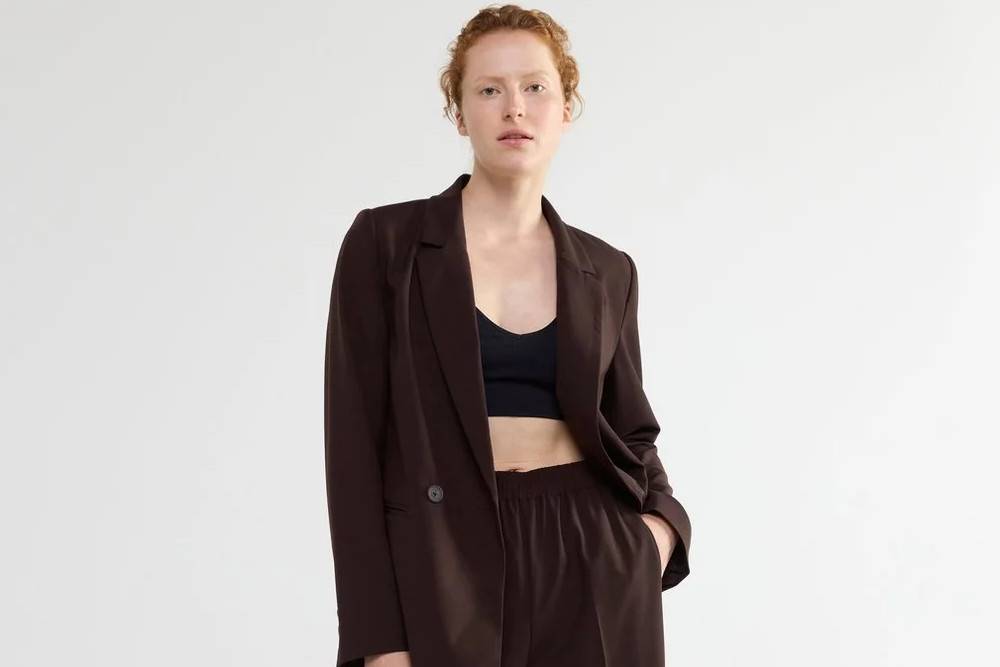
Lindex is a Swedish fashion retailer founded in 1954 and headquartered in Gothenburg, Sweden. The multinational clothing-retail company creates affordable fashion for women and children.
Lindex makes clothing, accessories, swimwear, and jewelry. The Finnish fashion group, Stockmann plc, owns Lindex and offers a diverse and high-quality selection of fashion, beauty, and home products.
Lindex is one of Europe's leading fashion companies and operates more than 440 stores. It has around 5,000 employees in stores, factories, and logistics across 19 countries in the EU and Norway.
Lindex has environmental considerations for its operations and develops products with energy saving in mind and the most environmentally friendly solutions.
Lindex's sustainability promise is to make a difference for future generations by empowering women, respecting the planet, and ensuring human rights.
Panaprium is independent and reader supported. If you buy something through our link, we may earn a commission. If you can, please support us on a monthly basis. It takes less than a minute to set up, and you will be making a big impact every single month. Thank you!
Sustainability Rating: 6/10
Rating FAQ
Category: Clothing, accessories, bags, jewelry
For: Women, children
Type: Basics, denim, knitwear, activewear, underwear, loungewear, swimwear, outerwear, maternity
Style: Casual
Quality: Medium
Prices: $$
Sizes: XS-3XL, 6-26 (US), 8-28 (UK), 34-54 (EU), 8-28 (AU)
Fabrics: Cotton, linen, hemp, ramie, jute, lyocell, modal, viscose, cupro, acetate, polyester, nylon, spandex, polyethylene, polypropylene, acrylic, neoprene, polyurethane, leather, wool, silk, down
100% Organic: No
100% Vegan: No
Ethical & Fair: Yes
Recycling: Yes
Producing countries: Bangladesh, China, India, Italy, Latvia, Myanmar, Pakistan, Poland, Portugal, South Korea, Sri Lanka, Turkey
Certifications: GOTS, OCS, BCI, FSC, Oeko-Tex, SMETA, BSCI, SEDEX, SA8000
Sustainability Practices
Lindex takes wide-ranging measures to protect biodiversity, reduce its consumption of water, energy, and other resources, avoid waste, and combat climate change.
It wants to manage its environmental impact and empower and inspire women everywhere. However, the majority of its business remains detrimental to the environment.
Lindex only uses a tiny proportion of organic materials such as organic cotton and hemp or recycled materials such as recycled polyester.
Most of the fabrics it uses are either natural without relevant certifications, such as regular cotton or linen, or synthetic petroleum-based fibers such as polyester, nylon, acrylic, and more.
Lindex also uses a small proportion of semi-synthetic fibers or regenerated cellulosic fabrics such as Tencel lyocell, modal, acetate, and viscose.
Tencel is an eco-friendly fiber made with wood pulp from certified sustainable forests. But only a tiny proportion of the materials used by Lindex are environmentally friendly and sustainable.
Lindex publishes a list of all its manufacturers and processing facilities on its corporate website. It aims to achieve gender equality and empower female textile workers.
The 2021 Fashion Transparency Index gave Lindex a score of 50% based on how much the group discloses about its social and environmental policies, practices, and impacts.
Lindex manufactures its clothes in Turkey and many other East Asian countries, where human rights and labor law violations happen every day.
The Swedish clothing retailer shows some labor certification standards that would ensure good working conditions, health, safety, and other human rights for workers in its supply chain.
Lindex has a code of conduct that applies to all its suppliers and subcontractors based on ETI's (Ethical Trading Initiative) code of conduct but with an enhanced focus on gender equality.
Lindex assesses compliance with its Code of Conduct by developing self-assessment audits. It aims to move the responsibility and ownership to the supplier and develop their skills to improve conditions.
Lindex doesn't use exotic animal skin, hair, fur, or angora. But it uses leather, wool, silk, and down feathers to manufacture many of its clothing pieces.
These animal-derived materials are cruel and unethical. They also harm the environment by producing greenhouse gases and waste. More sustainable alternatives exist.
Sustainability Goals
Lindex has committed to making all its materials recycled or sustainably sourced by 2025. It also commits to ensuring that 100% of the cotton it uses comes from more sustainable sources by 2025.
Lindex will make its suppliers, who are responsible for 80% of its production, show total supply chain transparency by 2025.
By 2025, Lindex will ensure that 80% of its first-tier suppliers have implemented WE women and HERhealth from the Private Sector Action for Women's Health and Empowerment Initiative.
Lindex is committed to CanopyStyle to driving innovation and development with the vision that by 2030, 50% of the viscose used worldwide will come from recycled textiles.
Lindex is also working towards its goal that all paper and plastic packaging shall follow its circular material strategy by 2025.
Buy Here
Discover Lindex's sustainable collections at Lindex.com.
Reviews And Experiences With Lindex
Have you had (good) experiences with shopping at or the products of Lindex? Then leave us your rating below.
What We're Up Against
Multinational corporations overproducing cheap products in the poorest countries.
Huge factories with sweatshop-like conditions underpaying workers.
Media conglomerates promoting unethical, unsustainable products.
Bad actors encouraging overconsumption through oblivious behavior.
- - - -
Thankfully, we've got our supporters, including you.
Panaprium is funded by readers like you who want to join us in our mission to make the world entirely sustainable.
If you can, please support us on a monthly basis. It takes less than a minute to set up, and you will be making a big impact every single month. Thank you.





























0 comments